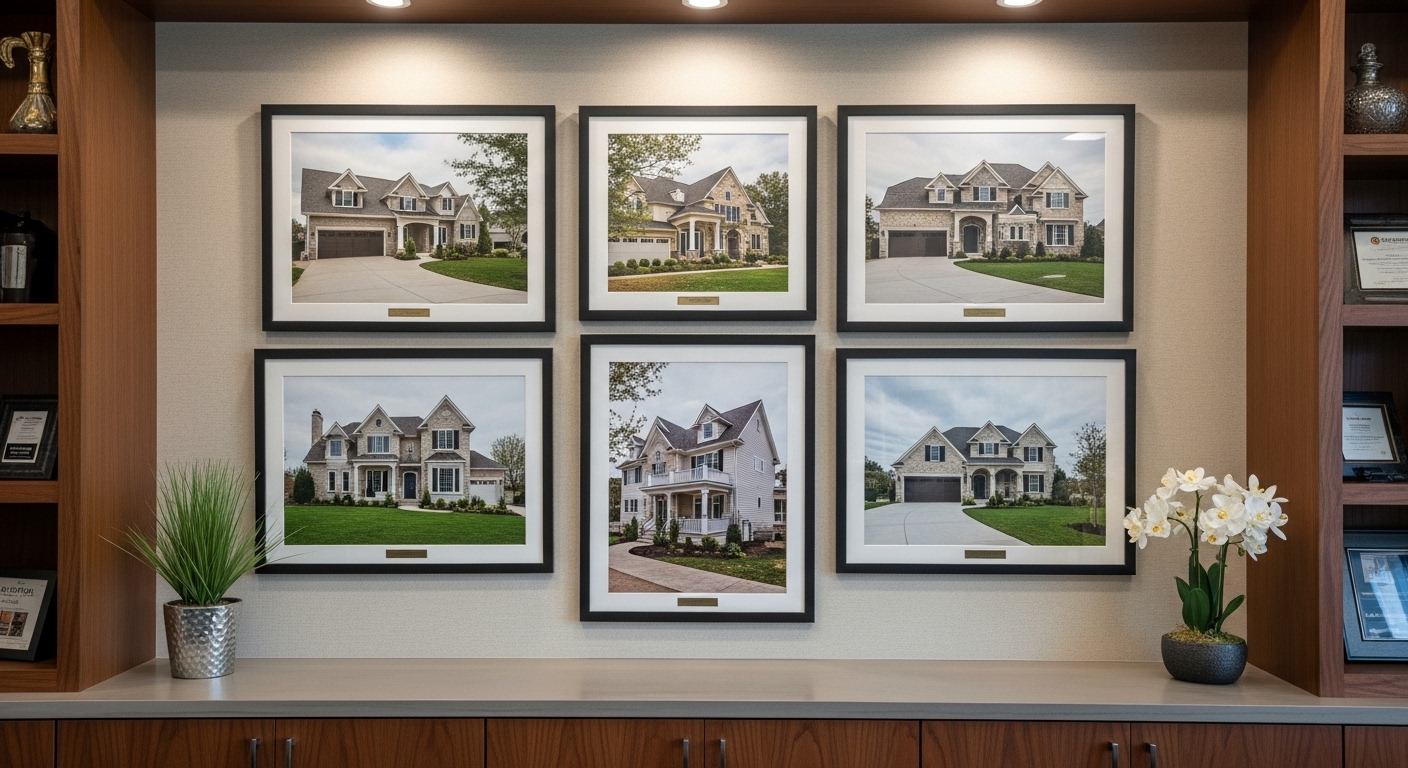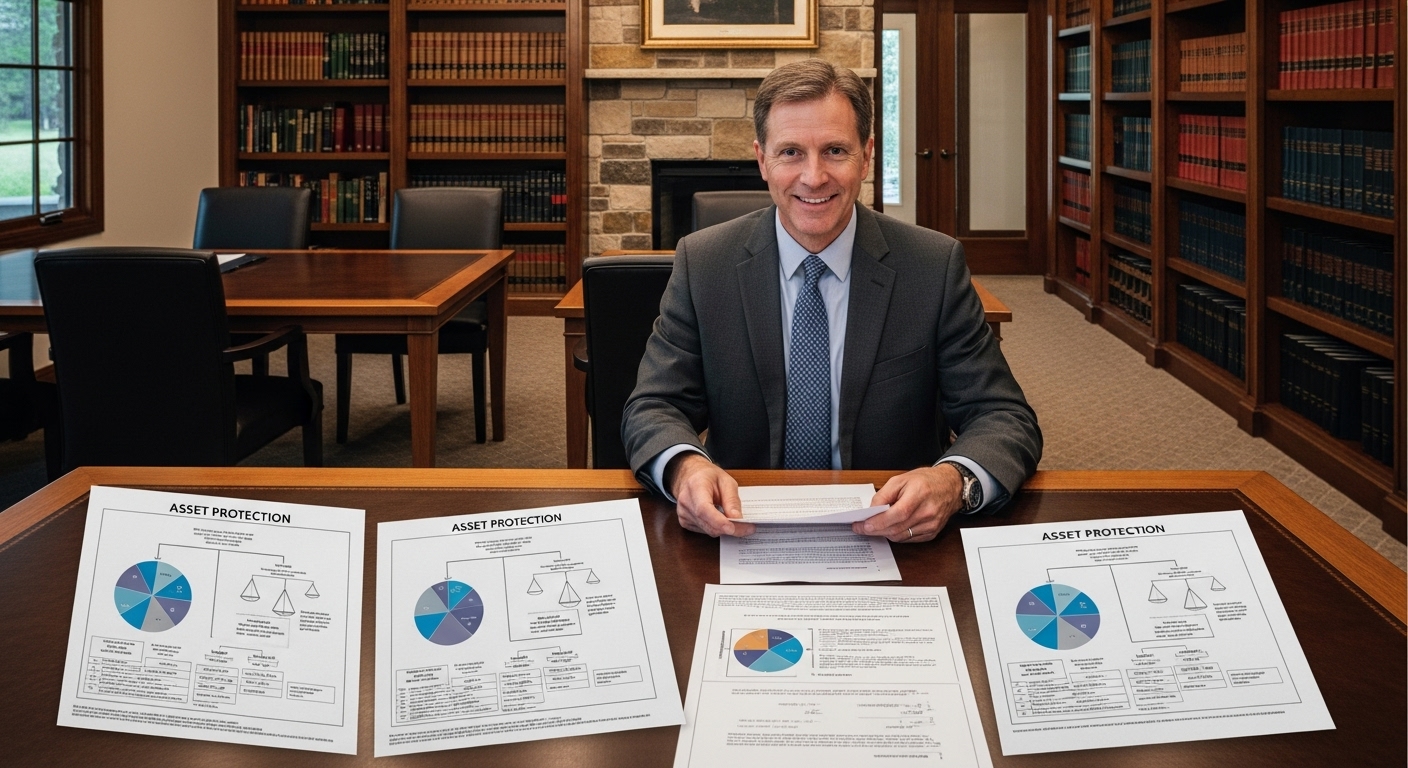August 1, 2025 by 100XBuilds Team
Estate Planning for Building Business Assets & Wealth

A $12 million custom home building empire dissolved into family litigation within 18 months of the founder's unexpected passing. The culprit? No formal estate plan protecting the business assets that took three decades to build.
This scenario plays out more frequently than luxury builders realize. According to the Family Business Institute, only 30% of family businesses survive to the second generation, and a staggering 88% fail by the third generation. For custom home builders managing multi-million dollar operations, the stakes couldn't be higher.
The Hidden Vulnerabilities in Builder Wealth
Custom home building businesses face unique estate planning challenges that generic wealth management strategies fail to address. Your company likely holds $2-15 million in active projects, owns valuable real estate, maintains complex contractor relationships, and carries significant liability exposure.

Project-in-progress exposure: Active builds averaging $800K-$3M each create immediate liquidity challenges for estates
Real estate portfolio complexity: Owned lots, spec properties, and development land require specialized valuation and transfer strategies
Contractor network dependencies: Key relationships with subcontractors and suppliers that drive 60-80% of project success
Licensing and bonding complications: State-specific requirements that can halt operations during ownership transitions
Consider the case of Heritage Custom Homes in Colorado. When the founder passed unexpectedly, the estate faced $4.2 million in active construction commitments with no clear succession plan. The family was forced to sell the business at a 40% discount to meet immediate obligations, losing generational wealth that could have been preserved with proper planning.
Business Valuation: Beyond Simple Asset Calculations
Traditional estate planning often undervalues custom building businesses by focusing solely on tangible assets. Your company's true worth extends far beyond equipment and real estate.
The Four Pillars of Builder Business Value
Reputation and brand equity: A luxury builder's reputation can represent 30-50% of total business value, yet remains invisible in basic asset calculations
Client relationship portfolio: Repeat clients and referral networks that generate 70% of new business for established builders
Proprietary systems and processes: Documented workflows, vendor relationships, and quality control systems that ensure consistent $2M+ project delivery
Development rights and land options: Future building opportunities that may appreciate 15-25% annually in prime markets

A comprehensive business valuation for estate planning purposes should include:
Revenue multiple analysis: Custom builders typically trade at 1.5-3x annual revenue, depending on market position and growth trajectory
Asset-based valuation: Fair market value of equipment, real estate, and inventory, adjusted for rapid depreciation in construction assets
Income approach modeling: Projected cash flows considering seasonal variations and economic cycles specific to luxury construction
Market comparables: Recent sales of similar custom building operations in your geographic market
Tax-Efficient Ownership Structures
The structure of your business ownership directly impacts estate tax exposure and succession options. Many builders operate as sole proprietorships or simple LLCs, missing opportunities for significant tax savings.
Strategic Entity Selection
Family Limited Partnerships (FLPs): Allow gradual transfer of business interests to next generation while maintaining control, potentially reducing estate values by 20-40% through valuation discounts
Grantor Retained Annuity Trusts (GRATs): Particularly effective for builders experiencing rapid growth, allowing transfer of appreciation to heirs while minimizing gift tax exposure
Charitable Remainder Trusts: Convert highly appreciated real estate or business interests into diversified income streams while providing substantial tax deductions

A Texas-based luxury builder restructured his $8 million operation using an FLP, transferring 60% ownership to his children over five years. The strategy reduced his taxable estate by $2.1 million while maintaining operational control through general partnership interests.
Succession timing considerations: Begin transfers during strong financial years when business valuations support favorable gift tax calculations
Control retention mechanisms: Voting vs. non-voting interests, management agreements, and buy-sell provisions that protect operational continuity
Tax optimization strategies: Annual exclusion gifts, generation-skipping transfers, and charitable deductions that maximize wealth transfer efficiency
Succession Planning: Beyond Family Transitions
Not every luxury builder has family members interested in continuing the business. Alternative succession strategies can preserve wealth while ensuring business continuity.
Management Buyout Structures
Installment sales: Spread capital gains over multiple years while providing steady retirement income, particularly effective for builders with $5M+ operations
Earn-out provisions: Link final purchase price to future performance, protecting sellers from operational changes while incentivizing buyer success
Consulting agreements: Maintain involvement and income while transferring operational responsibility, crucial for preserving client relationships during transitions
Strategic Sale Preparation
Financial documentation: Three years of audited statements, detailed project profitability analysis, and normalized earnings calculations
Operational systematization: Document all processes, vendor relationships, and quality control procedures to demonstrate business sustainability
Market positioning: Establish clear competitive advantages, geographic market dominance, and growth potential that justify premium valuations

A California custom builder spent two years preparing for succession, implementing management systems and financial controls. The preparation increased the final sale price by 35% compared to initial valuations, generating an additional $1.8 million for the estate.
Asset Protection Strategies
Custom home builders face unique liability exposures that can threaten personal and business wealth. Effective asset protection requires layered strategies that address both operational risks and estate planning objectives.
Operational Risk Mitigation
Domestic asset protection trusts: Provide creditor protection while maintaining some access to trust assets, particularly valuable in states with favorable trust laws
Homestead exemptions: Maximize protection for primary residences, which can shelter $500K-$10M+ depending on state laws
Retirement plan optimization: Maximize contributions to protected retirement accounts, which typically offer unlimited creditor protection
Insurance gap analysis: Ensure adequate coverage for professional liability, general liability, and umbrella policies that protect against construction-related claims
Advanced Protection Techniques
Offshore structures: For builders with $10M+ net worth, international trusts and entities can provide additional protection layers, though requiring careful compliance management
Captive insurance companies: Self-insure certain risks while creating tax-advantaged wealth transfer opportunities for larger operations
Real estate titling strategies: Use of LLCs, land trusts, and other entities to separate valuable real estate from operational business risks

Insurance Integration with Estate Planning
Insurance plays a crucial role in estate planning for custom builders, providing liquidity for estate taxes while protecting business continuity.
Life Insurance Strategies
Buy-sell agreement funding: Ensure adequate liquidity for business transitions, typically requiring coverage equal to 70-100% of business value
Estate tax liquidity: Federal estate taxes can reach 40% for estates over $12.92 million (2023), requiring immediate cash that insurance can provide
Income replacement: Protect family lifestyle and business operations during transition periods, particularly critical for spouse and children not involved in the business
Key person coverage: Protect against loss of critical employees or partners whose departure could significantly impact business value
Disability and Business Interruption
Disability income insurance: Replace personal income if unable to work, typically providing 60-70% of pre-disability earnings
Business overhead expense: Cover fixed business costs during disability periods, ensuring operations can continue or wind down properly
Key person disability: Protect against income loss from disabled partners or critical employees

A Colorado luxury builder discovered his $50,000 annual life insurance policy would cover less than 5% of his estate tax liability. After restructuring with $2.5 million in coverage through an irrevocable life insurance trust, his family gained the liquidity needed to maintain business operations during succession.
Implementation Timeline and Action Steps
Estate planning for luxury builders requires systematic implementation over 12-24 months to maximize effectiveness and minimize disruption to operations.
Phase 1: Assessment and Foundation (Months 1-3)
Comprehensive business valuation: Engage qualified appraisers familiar with construction industry dynamics
Current plan review: Analyze existing wills, trusts, and business agreements for gaps and opportunities
Tax projection modeling: Calculate potential estate tax exposure under current and proposed structures
Insurance needs analysis: Determine coverage gaps and optimization opportunities
Phase 2: Structure Implementation (Months 4-12)
Entity restructuring: Implement optimal ownership structures for tax efficiency and succession planning
Trust establishment: Create and fund appropriate trusts for wealth transfer and asset protection
Buy-sell agreement updates: Ensure business agreements reflect current valuations and succession plans
Insurance policy implementation: Secure necessary coverage and integrate with overall estate plan
Phase 3: Ongoing Management (Months 13+)
Annual plan reviews: Update valuations, adjust strategies for tax law changes, and modify structures as business evolves
Family education: Ensure next generation understands business operations and estate plan objectives
Professional team coordination: Maintain regular communication between attorneys, CPAs, and financial advisors

Protecting Your Legacy
Your custom home building business represents more than financial assets—it embodies decades of relationships, reputation, and craftsmanship that define your professional legacy. Without proper estate planning, this legacy faces unnecessary risks that can be mitigated through strategic planning and professional guidance.
The builders who successfully transfer wealth to the next generation share common characteristics: they start planning early, work with specialized professionals, and view estate planning as an ongoing business process rather than a one-time event.
Ready to protect your building empire and secure your family's financial future? Contact our estate planning specialists who understand the unique challenges facing luxury custom home builders. Schedule your confidential consultation today to discover how proper planning can preserve your wealth, protect your business, and ensure your legacy continues for generations to come.
Don't let your life's work become another cautionary tale. Take action now to implement the estate planning strategies that will protect everything you've built.
